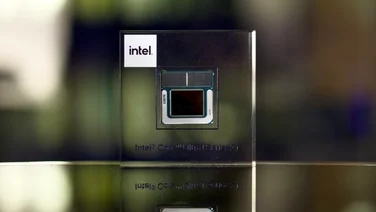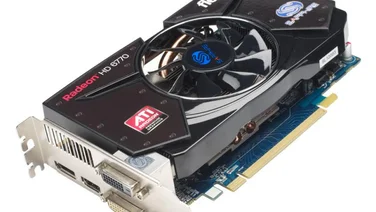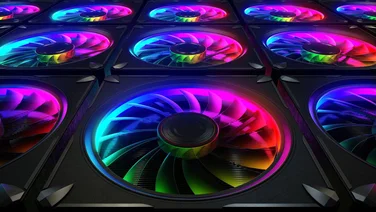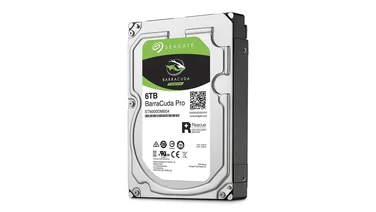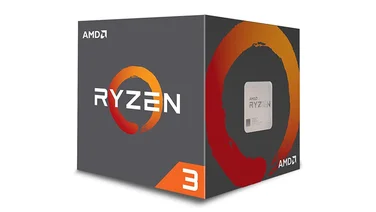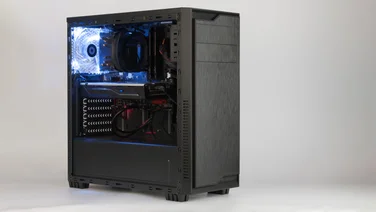To help us provide you with free impartial advice, we may earn a commission if you buy through links on our site. Learn more

- Dual BIOS support included
- Nine full-sized USB ports a bonus
- Eight fan headers allow for multiple components
- Heatsinks prone to rattling
- BIOS design could be improved
- Too early to judge performance against other X470 motherboards
You don’t need an X470-chipset motherboard to use one of AMD’s second-gen Ryzen processors, or even the cheaper B450 models. Backwards compatibility means older 300-series chipsets, such as X370 and B350, will work with the new CPUs just fine. That said, with the updated chipsets promising better power efficiency and more stable overclocking, they’re absolutely worth a look.
The X470 Aorus Gaming 7 WiFi is a premium option, but it certainly looks the part. Gigabyte has slathered this motherboard with chunky heatsinks and customisable RGB lighting, everywhere from the PCI-E x16 slots to a strip running down the right edge and on top of the I/O panel cover. Some decorations don’t work so well, such as the red go-faster stripes that are dotted around, but overall it’s a very swish-looking motherboard.
READ NEXT: The best AMD and Intel motherboards you can buy right now
Gigabyte X470 Aorus Gaming 7 WiFi review: Card carrying
More importantly, it’s a well-featured one as well. A total of eight fan headers means an extensive mix of components and case cooling is possible, and it’s always good to see a two-digit POST code LED display that can help identify booting problems.
For the most luxurious PC builds, there’s also an extra 4-pin 12V power socket, in addition to the main 8-pin socket. This is something you typically see on more enthusiast-grade motherboards, and it’s so that you can feed even more power into the board, which helps fuel overclocking.

Three PCI-E slots, meanwhile, allow for both Nvidia SLI and AMD CrossFire setups in dual – or quad -GPU configurations. As per usual, only the top slot actually runs at x16 speed, and will drop to x8 – the second slot’s default speed – when using multiple graphics cards. The third and final slot stays at x4 speed. Two PCI-E x1 slots provide even more expansion opportunities, and Gigabyte has gone a little further than most manufacturers by including detachable heatsinks on both its M.2 ports instead of just one.
Here we see the only issue with build quality: the heatsinks aren’t held stiff unless there’s a drive in the port, so if empty they can rattle, but this was only noticeable when handling the motherboard. When mounted inside our test PC, the heatsinks stayed still and thankfully didn’t rattle as a result of vibrations from the system’s spinning fans.
Gigabyte X470 Aorus Gaming 7 WiFi review: Music maestro
The rear 1/0 panel is excellent. Nine full-size USB ports is about as good as you can expect at this price, and that includes two USB2 ports, four standard USB3 ports, two USB3 DAC-UP ports (for connecting to hi-fi equipment) and a single USB3.1 port. On top of that, you get a reversible USB Type-C port and a full assortment of audio connectors, including an S/PDIF output, 3.5mm rear speaker and C/SUB outputs, and the standard line in, line out and microphone jacks.
Accompanying it all are antenna mounting points for the integrated 802.11ac module – another highlight, especially since it also provides Bluetooth 5.0 – as well as a Clear CMOS button and a power button. We think the latter would have made more sense on the motherboard itself, however; your chassis will always have its own external power button, but having an internal one is useful when you’re tinkering with components.
We can’t fully judge the X470 Aorus Gaming 7 WiFi’s overclocking performance until we get some other X470 motherboards in to test, but the difference between motherboards is usually very slim. In any case, we pushed the high-end Ryzen 7 2700X from its 3.7GHz stock speed to 4.15GHz without any issues, only bumping into crashes when we tried to go up to 4.2GHz.
That might only sound like a modest increase, but this is partly due to AMD setting 2nd-gen Ryzen chips at already quite aggressive stock speeds, and partly due to us using air cooling. We don’t expect to see any big drops or increases on other boards, although it is odd how AMD is pitching the X470 as being better for overclocking when its accompanying CPUs have less headroom than their 1st-gen predecessors.

We’ve also used better BIOS designs when overclocking, or at least more interesting ones. The X470 Aorus Gaming 7 WiFi’s BIOS is an uninspired series of lists and menus, which may prove overwhelming to the uninitiated.
READ NEXT: Asus ROG Strix X370-I Gaming review
Gigabyte X470 Aorus Gaming 7 Wifi review: It’s them Aorus
Still, we can’t fault the CPU and memory tweaking options, which cover everything a seasoned overclocker would need; RAM timings have particularly fine controls. Leaving ‘EZ Overclock Tuner’ engaged also means the BIOS does a decent job of self-adjusting voltages, which is good if you only feel comfortable changing the CPU frequency. Dual BIOS support is included as well, so a backup is kept in case something goes horribly wrong with the main BIOS, such as a botched update.
For Ryzen-based PC builds with only simple cooling, or without the need for multiple M.2 drives, it’s probably wisest to save your cash and get a cheaper motherboard such as the Asus Prime X470-Pro or MSI’s X470 Gaming Plus. Otherwise, the X470 Aorus Gaming 7 WiFi is a lovely board that competes with or beats more expensive models (such as the Asus ROG Crosshair VII Hero) on features.



